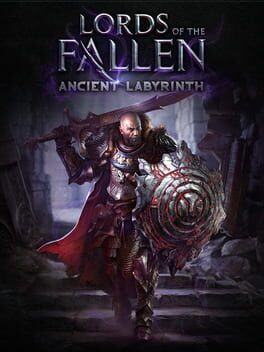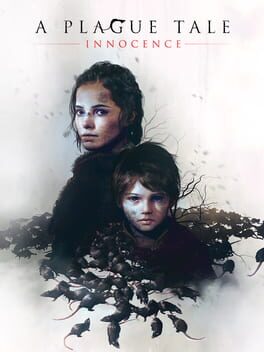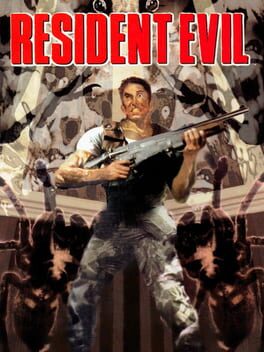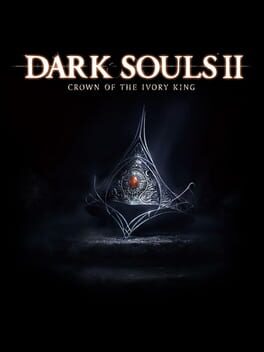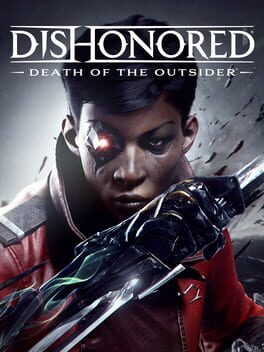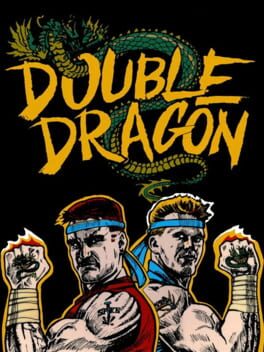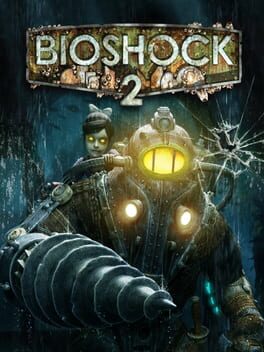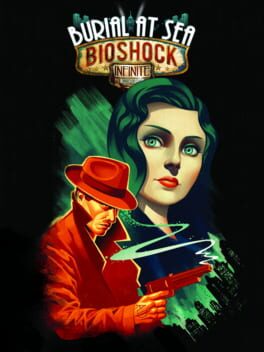squid0812
BACKER
2016
A problematic game. In some ways, this game is the most refined in the series - the level design is dense and full of secrets and the environments, bosses, and enemy designs are consistently imaginative and creepy. But this game is lacking in many of the features that made Demon’s Souls, Dark Souls, and even the much-maligned Dark Souls II so memorable. It’s hard to overstate, for instance, how disheartening it is that the under-baked narrative of this game is basically just a collection of Easter eggs and retreads from earlier Souls titles. The second half of the game is also filled with bosses and enemies that have effectively infinite stamina, leading to some drawn-out slogs with inflated difficulty (saying this as someone who has beaten this game shieldless and who generally speaking doesn’t have a hard time with it - it is not fun to fight enemies that just constantly attack with no break). This emphasis on difficulty feels like a fundamental misunderstanding on the part of the developers - the original Dark Souls was great because it tested your mind, not your reflexes. The linear world design is also a major disappointment that saps a lot of the replay value out of the game - starting a Dark Souls game by consciously choosing to take on a harder area first is a satisfying experience that is completely missing here.
With the caveat that this my least favorite modern From game out of the way, I’ll finish by saying that this game is still a lot of fun, and that you should play it. Just don’t expect something revolutionary like the original game.
With the caveat that this my least favorite modern From game out of the way, I’ll finish by saying that this game is still a lot of fun, and that you should play it. Just don’t expect something revolutionary like the original game.
I know that have these companies have the bottom line to worry about, but it is still really frustrating to see so many developers churn out crap DLC just for the sake of it.
The title really gives this one away. The DLC adds a generic labyrinth to the game. There is really nothing to the aforementioned maze - it’s another crypt-like environment in a game that is full of them. The new enemies are just skeleton warriors with obnoxiously inflated damage and health. There is also some vague lore BS about how this maze is where the gods of game world were trapped an eternity ago. Well, they couldn’t have been that impressive since they apparently couldn’t pull a few levers and traverse a couple hallways.
The boss at the end actually has a unique gimmick, unlike most of the base game bosses. Unfortunately, that gimmick is sort of cheap because it is poorly signaled and can lead to instant death. I give them a half a star for trying though.
The title really gives this one away. The DLC adds a generic labyrinth to the game. There is really nothing to the aforementioned maze - it’s another crypt-like environment in a game that is full of them. The new enemies are just skeleton warriors with obnoxiously inflated damage and health. There is also some vague lore BS about how this maze is where the gods of game world were trapped an eternity ago. Well, they couldn’t have been that impressive since they apparently couldn’t pull a few levers and traverse a couple hallways.
The boss at the end actually has a unique gimmick, unlike most of the base game bosses. Unfortunately, that gimmick is sort of cheap because it is poorly signaled and can lead to instant death. I give them a half a star for trying though.
2010
A mildly interesting failure. I started off hating the story and rather liking the gameplay, and ended up with something closer to the opposite. I’m more or less convinced that there is no video game protagonist less likable than the pretentious, self aggrandizing man-child known as Alan Wake. Seriously, this dude is the worst, and I had a hard time believing that the devs wanted me to sympathize with this asshole. The other characters typically aren’t much better (Barry, the literary agent, is really the only other one who is fully developed and he is a stock comic relief character of the most annoying variety). It wasn’t until I stopped taking the story seriously and started to chuckle at some of the (unintentional?) humor - mostly generated by the drunken, trigger-happy FBI agent who shows up out of nowhere a few chapters in - that I started to tolerate it. I don’t quite get the admiration for the meta-textual accoutrements the story toys around with - some of the details are mildly clever (it’s fun to read hints of what is going to happen later in the game as you collect Alan’s manuscript), but I was disappointed that the game doesn’t really do anything truly imaginative with the melding of fiction and reality until the DLC.
As I mentioned above, I started off appreciating the tension generated by the gameplay - fiddling with batteries, different weapons, etc. I especially enjoyed the tension of trying desperately to run to the next light source without being overwhelmed. The problem: the game never really builds on this, at least until the DLC. You’ll spend all 12 hours of this more or less repeating very similar encounters with repetitive enemies in extremely familiar settings (80% of this takes place in the woods). The lack of imagination here is dire. Frustratingly, the game does finally introduce a potentially interesting, new mechanic - in the last 10 minutes, with no opportunity to actually develop it. Again, the DLC is mildly more engaging in this regard, but on the whole, the failure to build upon the initial gameplay loop here is very close to a fatal flaw.
A game that’s ultimately more bad than good for me, but it’s not without a few points of interest.
As I mentioned above, I started off appreciating the tension generated by the gameplay - fiddling with batteries, different weapons, etc. I especially enjoyed the tension of trying desperately to run to the next light source without being overwhelmed. The problem: the game never really builds on this, at least until the DLC. You’ll spend all 12 hours of this more or less repeating very similar encounters with repetitive enemies in extremely familiar settings (80% of this takes place in the woods). The lack of imagination here is dire. Frustratingly, the game does finally introduce a potentially interesting, new mechanic - in the last 10 minutes, with no opportunity to actually develop it. Again, the DLC is mildly more engaging in this regard, but on the whole, the failure to build upon the initial gameplay loop here is very close to a fatal flaw.
A game that’s ultimately more bad than good for me, but it’s not without a few points of interest.
Strangely enough, this is my favorite piece of Alan Wake content. Finally, after leaving us to wander through extremely repetitive forests throughout the majority of the base game, the devs at Remedy actually decided to introduce some genuinely weird and unsettling environmental details. For a game that’s at least partially concerned with dream logic, it’s pretty stunning to me that this theme didn’t really manifest in the setting until the last DLC, but it’s a welcome shift nonetheless. The combat is also a significant improvement over the first DLC - it maintains the inventive scenarios and mechanical variety while making it a lot less unrelenting and tedious. I also appreciated the narrative thrust, which is basically Alan Wake coming to terms with the fact that he is a terrible person.
Now comes the part where I have to mention that this ends with one of the most idiotic and unnecessary boss fights in recent memory. Still, it’s a move in the right direction.
Now comes the part where I have to mention that this ends with one of the most idiotic and unnecessary boss fights in recent memory. Still, it’s a move in the right direction.
This is a game with a narrative and characters I really enjoyed, but whose mechanics I found to be a real drag.
The setting here is the true standout - it’s a fairly faithful rendering of late medieval France during the Black Death, with the catch being that the rats themselves, rather than the bacteria they carry, are the real threat. Oh, and they also are being driven to kill by some sort of supernatural evil that is passed on through blood. One of the things I really liked here was how the setting strikes a strong balance between lived-in historical details (which are horrific in their own right - indeed, this includes what must be the most grisly depiction of the carnage of medieval warfare in games) and some of the more fantastical elements (rat moats, rat towers, rat tornados - if you like rats, you will like this game). It helps that the game looks excellent - I frequently found myself pausing in extremely unlikely places (i.e. in the midst of a battlefield teeming with corpses) to ogle some bit of creepy or beautiful imagery.
More surprising for me was how much I bought into the characters. It’s one of those stories where a ragtag bunch of misfit kids come together to form their own little family unit, which sounds pretty hackneyed but ultimately works, because each of the kids receive some of their own scenes that help the player understand who they are and what drives them. In short, they are well-sketched. I was pleased that our protagonist, Amicia, feels like an actual teenager rather than a superhuman power fantasy like most video game heroes. She’s a teenager who is effectively forced to act as a surrogate parent, and (predictably enough) she screws up a lot. How Amicia reacts to the story’s increasingly high-stakes situations - when she gets annoyed, when she gets flustered, when she gets sad - all feel natural and true to life. Hence, the growth she experiences in her character arc feels narratively and emotionally satisfying.
There’s just one problem I haven’t mentioned yet - I didn’t have a lot of fun playing this game. It might be superficially labeled as a stealth game, but in actuality it’s more of an interactive movie disguised as a stealth game. Nearly every part of these levels is scripted. Many levels appear to be open for exploration, but actually almost all of them are hallways with a single set path the player must proceed through to progress. So the opportunities for exploration, which seem so enticing at first, are actually extremely limited.
There’s also not much space available for player expression - Amicia’s combat toolset is limited from the start and remains so throughout the game. The sling works well enough, but I was pretty annoyed by how little they expanded Amicia’s toolbox to make the stealth and combat more engaging. You will be using very basic stealth staples like silent takedowns and using bottles to distract enemies throughout the game. Eventually, you’ll proceed to using the rat threat to clear out enemies and solve puzzles, but the game really doesn’t go much further than that. Maybe it’s for the best, though, because the mandatory combat encounters in this game are awful (outside of the final boss, which is glorious in its goofiness). The bosses are all basic variations on the tired trope of hurting the boss in a single specific way three times before they die.
Ultimately, what I was missing here was the freedom to play the way I wanted, rather than the way the devs prescribed. This didn’t need to be Hitman 2016 or Deus Ex, but at least a basic degree of player expression would have really helped make the mechanics as engaging as the story. As is, I found myself largely going through the motions gameplay-wise. Here’s to hoping they expand on the mechanics for the sequel.
The setting here is the true standout - it’s a fairly faithful rendering of late medieval France during the Black Death, with the catch being that the rats themselves, rather than the bacteria they carry, are the real threat. Oh, and they also are being driven to kill by some sort of supernatural evil that is passed on through blood. One of the things I really liked here was how the setting strikes a strong balance between lived-in historical details (which are horrific in their own right - indeed, this includes what must be the most grisly depiction of the carnage of medieval warfare in games) and some of the more fantastical elements (rat moats, rat towers, rat tornados - if you like rats, you will like this game). It helps that the game looks excellent - I frequently found myself pausing in extremely unlikely places (i.e. in the midst of a battlefield teeming with corpses) to ogle some bit of creepy or beautiful imagery.
More surprising for me was how much I bought into the characters. It’s one of those stories where a ragtag bunch of misfit kids come together to form their own little family unit, which sounds pretty hackneyed but ultimately works, because each of the kids receive some of their own scenes that help the player understand who they are and what drives them. In short, they are well-sketched. I was pleased that our protagonist, Amicia, feels like an actual teenager rather than a superhuman power fantasy like most video game heroes. She’s a teenager who is effectively forced to act as a surrogate parent, and (predictably enough) she screws up a lot. How Amicia reacts to the story’s increasingly high-stakes situations - when she gets annoyed, when she gets flustered, when she gets sad - all feel natural and true to life. Hence, the growth she experiences in her character arc feels narratively and emotionally satisfying.
There’s just one problem I haven’t mentioned yet - I didn’t have a lot of fun playing this game. It might be superficially labeled as a stealth game, but in actuality it’s more of an interactive movie disguised as a stealth game. Nearly every part of these levels is scripted. Many levels appear to be open for exploration, but actually almost all of them are hallways with a single set path the player must proceed through to progress. So the opportunities for exploration, which seem so enticing at first, are actually extremely limited.
There’s also not much space available for player expression - Amicia’s combat toolset is limited from the start and remains so throughout the game. The sling works well enough, but I was pretty annoyed by how little they expanded Amicia’s toolbox to make the stealth and combat more engaging. You will be using very basic stealth staples like silent takedowns and using bottles to distract enemies throughout the game. Eventually, you’ll proceed to using the rat threat to clear out enemies and solve puzzles, but the game really doesn’t go much further than that. Maybe it’s for the best, though, because the mandatory combat encounters in this game are awful (outside of the final boss, which is glorious in its goofiness). The bosses are all basic variations on the tired trope of hurting the boss in a single specific way three times before they die.
Ultimately, what I was missing here was the freedom to play the way I wanted, rather than the way the devs prescribed. This didn’t need to be Hitman 2016 or Deus Ex, but at least a basic degree of player expression would have really helped make the mechanics as engaging as the story. As is, I found myself largely going through the motions gameplay-wise. Here’s to hoping they expand on the mechanics for the sequel.
1996
This is definitely dated, and the superior remake has rendered it a lot less essential than it was once thought to be. Taken on its own terms, however, I still think this game is a lot of fun. The Spencer Mansion is significantly less expansive and detailed here compared to the remake, but it still makes for a passable arena for the satisfying loop of solving puzzles, juggling resources and inventory slots, and fighting off the occasional zombie. Even given the rather barebones aesthetic, it was clear that Capcom had stumbled onto a winning formula - the fixed camera angles and tank controls, despised by many, are actually responsible for most of the tension in the early Resident Evil games, and that started here.
Of course, this does still feel like a rough draft in many ways. The technical limitations of the PS1 precluded the possibility of adding many environmental details to the setting. The mansion starts to feel a bit empty and drab as you clear out the zombies. The infamously awful voice acting and writing (somewhat amusing if you can vibe with the ‘so bad it’s good’ sensibility) contributes to the sense that the narrative is haphazardly slapped together. The pacing is all wrong - between the superb opening sequence and the resolution in the lab, it feels like this version of the story is missing a fully developed middle section (the subplots involving Lisa Trevor and the origins of the Spencer Mansion, added in the remake, are sorely missed here).
With those caveats noted, this is still an exciting and tense little thriller. Even given the existence of the remake, this holds up decently well 25 years on.
Of course, this does still feel like a rough draft in many ways. The technical limitations of the PS1 precluded the possibility of adding many environmental details to the setting. The mansion starts to feel a bit empty and drab as you clear out the zombies. The infamously awful voice acting and writing (somewhat amusing if you can vibe with the ‘so bad it’s good’ sensibility) contributes to the sense that the narrative is haphazardly slapped together. The pacing is all wrong - between the superb opening sequence and the resolution in the lab, it feels like this version of the story is missing a fully developed middle section (the subplots involving Lisa Trevor and the origins of the Spencer Mansion, added in the remake, are sorely missed here).
With those caveats noted, this is still an exciting and tense little thriller. Even given the existence of the remake, this holds up decently well 25 years on.
Like the other Dark Souls II DLCs, this is a massive leap forward from the base game level design-wise. Frozen Eleum Loyce is a joy to explore the first time around - but it’s straight-up revelatory the second time through, when the snow melts and new areas open up. As in the other two Crown DLCs, there are roughly 20% more enemies than is necessary - this doesn’t completely avoid the overly hostile encounter design of Sunken King or Old Iron King - but, on the whole, exploring the frozen castle is more or less a complete plus.
There are a few new bosses here. Aava, a giant white tiger who feels a bit like a rough draft of a Bloodborne beast fight, is fine, but it gets incredibly obnoxious when you have to fight two tigers (Lud and Zallen) at the same time after traversing the lightning-reindeer nightmare zone known as the Frigid Outskirts (skip this dreadful side area at all costs). Both of these bosses pale in comparison to the Burnt Ivory King, which is one of the most epic and unique boss encounters in any Souls game.
The Dark Souls II DLCs remain standouts (and the best part of that game) almost seven years on. The Crown of the Ivory King is no exception.
There are a few new bosses here. Aava, a giant white tiger who feels a bit like a rough draft of a Bloodborne beast fight, is fine, but it gets incredibly obnoxious when you have to fight two tigers (Lud and Zallen) at the same time after traversing the lightning-reindeer nightmare zone known as the Frigid Outskirts (skip this dreadful side area at all costs). Both of these bosses pale in comparison to the Burnt Ivory King, which is one of the most epic and unique boss encounters in any Souls game.
The Dark Souls II DLCs remain standouts (and the best part of that game) almost seven years on. The Crown of the Ivory King is no exception.
2017
A game with several appealing features that more or less make up for its abject embrace of some of the more stultifying open world design trends of recent years (filler side quests, a bland loot system, under-baked attempts to incorporate RPG mechanics, etc).
First off, the archery-based combat against the machines is consistently satisfying and engaging. My favorite moments involved staking out enemies from stealth, rigging the battlefield with tripwires, picking my preferred elemental ammo, and finally engaging the targets with precise bow strikes, hitting weak points and breaking off crucial parts to limit the machine’s attack options. It’s a near-perfect mixture of the methodical and the chaotic. It’s not lacking in drawbacks: melee combat feels like an underdeveloped afterthought, and fighting human enemies is consistently bland and generic. Nonetheless, you will spend most of your time in this game fighting robo-dinos, and that never really gets old.
The other element that helped me look past open world bloat is the creative and mysterious sci-fi backstory. Without revealing too much, there are a number of surprising plot developments that provide clever and satisfying explanations for why humanity has regressed back to tribalism and machines roam the earth. Slowly following the trail of bread crumbs to figure out how the world got to the point it’s at in the game is an addictive process that had me hooked from the start, obnoxious appropriations of Native American cultures notwithstanding (I dislike pretty much every story element involving any of various tribal interactions; cliches indulged include sun worship, initiation rites, and ‘chosen one’ mythologizing, among others). In a bit of awkward dramatic irony, I had the big twist figured out well before my player character did, but the finer details of the backstory are so intriguing that my interest never flagged regardless.
While the combat and storyline are good enough to have made this game well worth playing, it doesn’t completely transcend open world fatigue. I wasn’t nearly as engaged when doing anything besides the main storyline. I did all of the side quests, and I would estimate that only about 10-20% of them carried any interest. There are way too many of the uninspiring ‘find my family heirloom’ or ‘save my relative from certain death’ missions that just feel like filler. The one piece of side content that really worked for me were the cauldrons, the short yet challenging dungeon crawls that grant an override ability - these were consistently engaging and fun.
The RPG systems here are also mostly wall dressing. This is most obviously the case with the strange inclusion of role-playing dialogue choices, which only pop up a few times and are never interesting (the whole plot revolves around Aloy being heroic and kind, so these dialogue options mostly just let you choose between ‘good yet vengeful’ or ‘good and forgiving’). Leveling up also felt mostly pointless beyond raising Aloy’s health - this is not really a game where leveling allows for diverse builds or anything like that. I think the game probably would have been better off if the devs had just put in a skill tree and called it a day.
Horizon is a game that I enjoyed in spite of its genre underpinnings rather than because of them. Played as a 25 hour, plot-driven action-adventure game, I imagine I would have loved it unequivocally. As an overstuffed, 50 hour open world game, I have significant quibbles. Still, absolutely a game worth playing, whatever its flaws.
First off, the archery-based combat against the machines is consistently satisfying and engaging. My favorite moments involved staking out enemies from stealth, rigging the battlefield with tripwires, picking my preferred elemental ammo, and finally engaging the targets with precise bow strikes, hitting weak points and breaking off crucial parts to limit the machine’s attack options. It’s a near-perfect mixture of the methodical and the chaotic. It’s not lacking in drawbacks: melee combat feels like an underdeveloped afterthought, and fighting human enemies is consistently bland and generic. Nonetheless, you will spend most of your time in this game fighting robo-dinos, and that never really gets old.
The other element that helped me look past open world bloat is the creative and mysterious sci-fi backstory. Without revealing too much, there are a number of surprising plot developments that provide clever and satisfying explanations for why humanity has regressed back to tribalism and machines roam the earth. Slowly following the trail of bread crumbs to figure out how the world got to the point it’s at in the game is an addictive process that had me hooked from the start, obnoxious appropriations of Native American cultures notwithstanding (I dislike pretty much every story element involving any of various tribal interactions; cliches indulged include sun worship, initiation rites, and ‘chosen one’ mythologizing, among others). In a bit of awkward dramatic irony, I had the big twist figured out well before my player character did, but the finer details of the backstory are so intriguing that my interest never flagged regardless.
While the combat and storyline are good enough to have made this game well worth playing, it doesn’t completely transcend open world fatigue. I wasn’t nearly as engaged when doing anything besides the main storyline. I did all of the side quests, and I would estimate that only about 10-20% of them carried any interest. There are way too many of the uninspiring ‘find my family heirloom’ or ‘save my relative from certain death’ missions that just feel like filler. The one piece of side content that really worked for me were the cauldrons, the short yet challenging dungeon crawls that grant an override ability - these were consistently engaging and fun.
The RPG systems here are also mostly wall dressing. This is most obviously the case with the strange inclusion of role-playing dialogue choices, which only pop up a few times and are never interesting (the whole plot revolves around Aloy being heroic and kind, so these dialogue options mostly just let you choose between ‘good yet vengeful’ or ‘good and forgiving’). Leveling up also felt mostly pointless beyond raising Aloy’s health - this is not really a game where leveling allows for diverse builds or anything like that. I think the game probably would have been better off if the devs had just put in a skill tree and called it a day.
Horizon is a game that I enjoyed in spite of its genre underpinnings rather than because of them. Played as a 25 hour, plot-driven action-adventure game, I imagine I would have loved it unequivocally. As an overstuffed, 50 hour open world game, I have significant quibbles. Still, absolutely a game worth playing, whatever its flaws.
1986
The original Metroid controls surprisingly well for a game of its vintage. The platforming isn’t spectacular or anything, but it’s always functional at very least, and occasionally it crosses over into being straight-up satisfying. And it goes without saying that the concept of progressive empowerment through exploration is a brilliant and influential design innovation. Add on an impressively moody and dark atmosphere that would become something of a series trademark, and you can see the foundations of something really special even here in the earliest moments of the franchise.
With all that being said, there are some major issues here that are very nearly fatal flaws. The game badly needed a map considering the relatively repetitive environments - without it, being asked to navigate the maze-like levels feels unreasonable, to say the least. There are quality maps online, but that doesn’t mean the developers deserve a pass. An even more frustrating issue is the fact that crucial upgrades and progression markers are hidden behind random pixels that show no outward signal of being potential paths. Poking at the edges of the world to find secrets is certainly part of the joy in these games, but here it’s just obtuse. The player’s only choice is to either use a FAQ or to roll around every screen spamming bombs in the unlikely hope of finding a new path. I can only imagine how infuriating this must have been in the pre-internet days of 1986.
For as much of the unique Metroid appeal that’s present here in the first game of the series, it’s all unfortunately tainted by the game’s indulgence in the more hostile NES design trends of the period. An interesting historical artifact, but no one is going to miss much by skipping ahead to Metroid II or Super Metroid.
With all that being said, there are some major issues here that are very nearly fatal flaws. The game badly needed a map considering the relatively repetitive environments - without it, being asked to navigate the maze-like levels feels unreasonable, to say the least. There are quality maps online, but that doesn’t mean the developers deserve a pass. An even more frustrating issue is the fact that crucial upgrades and progression markers are hidden behind random pixels that show no outward signal of being potential paths. Poking at the edges of the world to find secrets is certainly part of the joy in these games, but here it’s just obtuse. The player’s only choice is to either use a FAQ or to roll around every screen spamming bombs in the unlikely hope of finding a new path. I can only imagine how infuriating this must have been in the pre-internet days of 1986.
For as much of the unique Metroid appeal that’s present here in the first game of the series, it’s all unfortunately tainted by the game’s indulgence in the more hostile NES design trends of the period. An interesting historical artifact, but no one is going to miss much by skipping ahead to Metroid II or Super Metroid.
2015
I can’t imagine how the pitch for this game must gone. Soccer, but with Hot Wheels instead of humans? Clearly some genius had faith, though, and we’re all better off for it.
For me, this is a more or less flawless online game. The matches are short enough to be addictive but long enough to contain multiple momentum shifts. Everything about the controls feels amazing - gunning it after a loose ball, drifting into the corners, jumping after a centered pass. You just can’t beat this in terms of game feel. Importantly, the matchmaking works so that you’re placed with folks of roughly the same experience level - it’s pretty rare to get stuck in matches with opponents who are overmatched or significantly more skilled.
Like the best online multiplayer games, this works for equally well for the diehards and the casuals - whether you’re putting in 10 hours a week or just picking it up for a quick game once every blue moon, there’s a lot of fun to be had. These kinds of games never really stick for me, but it’s hard to deny the superb design and craftsmanship on display here.
For me, this is a more or less flawless online game. The matches are short enough to be addictive but long enough to contain multiple momentum shifts. Everything about the controls feels amazing - gunning it after a loose ball, drifting into the corners, jumping after a centered pass. You just can’t beat this in terms of game feel. Importantly, the matchmaking works so that you’re placed with folks of roughly the same experience level - it’s pretty rare to get stuck in matches with opponents who are overmatched or significantly more skilled.
Like the best online multiplayer games, this works for equally well for the diehards and the casuals - whether you’re putting in 10 hours a week or just picking it up for a quick game once every blue moon, there’s a lot of fun to be had. These kinds of games never really stick for me, but it’s hard to deny the superb design and craftsmanship on display here.
2014
This was one of the very first Soulslikes to hit the market back in 2014, but, alas, it’s not exactly a highlight of the genre. The most common objection is the slow and plodding combat, which exceeds even the early Souls games in terms of stodginess. However, despite its flaws (i.e. enemies that turtle interminably behind shields that are nearly impossible to consistently guard break), it wasn’t the combat that ended up sinking this for me. Instead, it was the abject lack of anything evocative or interesting in the visual, audio, or narrative design.
Aesthetically speaking, this game is pure Teflon. The characters, weapons, armor, and enemies all look like knockoffs from World of Warcraft. The environments are consistently bland and repetitive - you will either explore dreary castle walls or dingy crypts with little variation (either way, the level design mostly just consists of hallways). In some of the more labyrinthine levels toward the end, I frequently got lost due to the repetition and the lack of distinguishing landmarks.
The story and writing are equally uninspired. This is most obvious in how things are named. You have weapons named things like ‘Breaker’ and ‘Scratch’ and bosses called ‘The Commander’ and ‘The Beast.’ This doesn’t even qualify as fantasy boilerplate - it’s like they straight-up ran out of time and were forced to leave placeholder names in the actual game. This wouldn’t be a huge issue if this sense of shoddy incompetence was avoided in the actual narrative content, but no such luck. I found most of the audio logs and paid attention to the cutscenes, but I still couldn’t tell you what the connection was between the various story elements: there’s a demon invasion, a spreading infection, and a rogue priest, but how it all fits together is beyond me. Worse yet, I never really cared to figure it out.
Unfortunately, Lords of the Fallen sort of set the standard for my relationship with the games of Deck13 - I’ve never had much of a problem with the gameplay, but the aesthetic choices are so overwhelmingly not for me that it overshadows any positive feelings.
Aesthetically speaking, this game is pure Teflon. The characters, weapons, armor, and enemies all look like knockoffs from World of Warcraft. The environments are consistently bland and repetitive - you will either explore dreary castle walls or dingy crypts with little variation (either way, the level design mostly just consists of hallways). In some of the more labyrinthine levels toward the end, I frequently got lost due to the repetition and the lack of distinguishing landmarks.
The story and writing are equally uninspired. This is most obvious in how things are named. You have weapons named things like ‘Breaker’ and ‘Scratch’ and bosses called ‘The Commander’ and ‘The Beast.’ This doesn’t even qualify as fantasy boilerplate - it’s like they straight-up ran out of time and were forced to leave placeholder names in the actual game. This wouldn’t be a huge issue if this sense of shoddy incompetence was avoided in the actual narrative content, but no such luck. I found most of the audio logs and paid attention to the cutscenes, but I still couldn’t tell you what the connection was between the various story elements: there’s a demon invasion, a spreading infection, and a rogue priest, but how it all fits together is beyond me. Worse yet, I never really cared to figure it out.
Unfortunately, Lords of the Fallen sort of set the standard for my relationship with the games of Deck13 - I’ve never had much of a problem with the gameplay, but the aesthetic choices are so overwhelmingly not for me that it overshadows any positive feelings.
This standalone expansion is a fairly dramatic downgrade from a gameplay perspective when compared with previous Dishonored content. The broad array of powers present in the base game is trimmed down to just three here, and they aren’t as useful as previous Outsider abilities. The unfortunate result is that stealth / non-violence feels a lot less viable (the removal of the chaos system also eliminates any consequences for just killing everybody throughout the level). I spent a lot of time here just straight-up fighting dudes. I’ve always thought of the basic sword-and-gun play of Dishonored as a fallback plan for when you didn’t have the mana to remain undetected or wreak absurd chaos with the Outsider powers, so operating frequently in shoot-and-strike mode was a bit of a downer.
With that significant caveat out of the way, here’s where I should mention that Arkane’s ridiculously dense level design and stellar world-building acumen kept me hooked throughout the game. In any normal video game series, the wonderfully complex bank heist mission, for instance, would be a towering, singular achievement. However, because this is Dishonored, it will have to be content competing with Jindosh’s Mansion and Aramis Stilton’s Manor from the base game for the title of best level of the past console generation. Such is the level of quality we are talking about here.
The world-building here continues the Dishonored tradition of being extremely creepy and evocative. Bizarre rituals, malevolent cults, languages that can only be spoken by the dead - these are just a few of the tropes expertly deployed to maximum effect. If Edgar Allan Poe and HP Lovecraft had collaborated, this is the sort of world I would’ve expected them to create.
Our protagonists, Billie Lurk and Daud, are arguably the most interesting characters this series has produced. The writers at Arkane have definitely not received enough credit for the ballsy way they have gradually transformed their supposed antagonists into complex antiheroes. The interplay between these characters consistently feels real and engaging, aided by the superb voice acting.
The removal of most of the outsider powers and the chaos system notwithstanding, this is pretty much everything I hope for in a Dishonored game. It may not stack up gameplay-wise to the best in the series, but there is more than enough quality content here to compensate.
With that significant caveat out of the way, here’s where I should mention that Arkane’s ridiculously dense level design and stellar world-building acumen kept me hooked throughout the game. In any normal video game series, the wonderfully complex bank heist mission, for instance, would be a towering, singular achievement. However, because this is Dishonored, it will have to be content competing with Jindosh’s Mansion and Aramis Stilton’s Manor from the base game for the title of best level of the past console generation. Such is the level of quality we are talking about here.
The world-building here continues the Dishonored tradition of being extremely creepy and evocative. Bizarre rituals, malevolent cults, languages that can only be spoken by the dead - these are just a few of the tropes expertly deployed to maximum effect. If Edgar Allan Poe and HP Lovecraft had collaborated, this is the sort of world I would’ve expected them to create.
Our protagonists, Billie Lurk and Daud, are arguably the most interesting characters this series has produced. The writers at Arkane have definitely not received enough credit for the ballsy way they have gradually transformed their supposed antagonists into complex antiheroes. The interplay between these characters consistently feels real and engaging, aided by the superb voice acting.
The removal of most of the outsider powers and the chaos system notwithstanding, this is pretty much everything I hope for in a Dishonored game. It may not stack up gameplay-wise to the best in the series, but there is more than enough quality content here to compensate.
1987
This review covers the watered-down port for the NES, rather than the co-op arcade beat-em-up (which, I’m told, looks and controls significantly better). In some ways, this functions as a cautionary tale about the pitfalls of porting a game. The NES wasn’t capable of handling the graphical output of the original arcade game, which forced a series of awkward compromises: the bland and anonymous backgrounds, only allowing two enemies on screen at a time, the removal of the co-op mode, and so forth. The features added in to compensate are either willfully obtuse (a poorly explained XP system that allows you to gradually unlock more powerful moves) or straight-up terrible (it’s difficult to adequately describe how cheap and awful the platforming sections are).
Now, this isn’t completely lacking in the old school NES charm. Once you unlock your full moveset, beating the snot out of the endless parade of enemies becomes rather fun. Unfortunately, this also isn’t lacking in the trademark NES hostility. The difficulty curve is one of the more bizarre I’ve encountered in games: you can breeze through the first two levels in 90 seconds a piece, but the last two levels are lengthy slogs jam-packed with hostile design choices.
It’s probably best to skip to the sequel - or better yet, just play River City Ransom instead.
Now, this isn’t completely lacking in the old school NES charm. Once you unlock your full moveset, beating the snot out of the endless parade of enemies becomes rather fun. Unfortunately, this also isn’t lacking in the trademark NES hostility. The difficulty curve is one of the more bizarre I’ve encountered in games: you can breeze through the first two levels in 90 seconds a piece, but the last two levels are lengthy slogs jam-packed with hostile design choices.
It’s probably best to skip to the sequel - or better yet, just play River City Ransom instead.
2010
My personal favorite Bioshock. This may lack the theoretical dimension of its predecessor, but it more than makes up for that by being a dramatic improvement mechanically. This game is emblematic of one of the best ways to think about designing a sequel: identify what the first one did well and build your entire game around it. The mechanical highlight of the first Bioshock was the careful planning that was necessary to confront superior forces that you wouldn’t be able to simply shoot your way past. The Big Daddy fights, and everything that went along with them - choosing the battleground, laying traps, hacking security, and so on - were far and away the best part of that game from a mechanical perspective. So, in keeping with the aforementioned philosophy, the developers made this the primary thing you do in Bioshock 2 - this game constantly puts the player in positions where they are outgunned (whether by Big Daddies, Big Sisters, or just massive groups of splicers) and forced to rely on their wits and resource management to win the day. The developers also did well to dramatically widen the player’s options for dealing with these situations - there are all kinds of different traps, mines, options for hacking, and many other ways to get creative in bringing down your enemies. The combat here is consistently expressive in a way that the first game only displayed periodically. I’ve heard some people suggest that the near-constant ‘last stand’ mentality demanded by this game can be fatiguing, but it never got old for me. Being thrown into situations where being clever and strategic can make the difference is pretty much why I play video games, so I was engaged throughout.
Another area of improvement is the level design. The first Bioshock had pretty stellar level design in its own right, but the amount of density and detail here is taken to new heights. Levels like Ryan Amusements, Pauper’s Drop, and Siren Alley feel significantly more expansive and lived-in than anything in the first game. They are also filled with all kinds of secret nooks and crannies where you can pick up useful resources. So dense are the levels that exploring them frequently made me think of Dishonored 2, which is just about as high a praise as I can give.
The one element of this game that drew a lot of flak was its narrative, mostly as it exists in comparison with the original. However, with a decade’s worth of retrospect, this seems a bit unfair. Yes, Sofia Lamb is a weak and simplistic follow-up to Andrew Ryan (still one of the greatest video game villains of all time). And yes, Lamb’s evil plan is some fairly stupid sci-fi mumbo-jumbo. But most every other story element (especially the relationship between the player character and Eleanor) works fine. And the people who derisively compare it to the first game are conveniently forgetting that Bioshock had significant story problems of its own. Bioshock 2, for instance, never suffers the dramatic drop in narrative quality that the first game does after its big twist is introduced. On the whole, Bioshock 2’s story is more personal and coherent, even if it’s significantly less ambitious.
This is a game that has lived for too long in the shadow of its predecessor. Bioshock 2 remains one of my favorite games of the 2010s.
Another area of improvement is the level design. The first Bioshock had pretty stellar level design in its own right, but the amount of density and detail here is taken to new heights. Levels like Ryan Amusements, Pauper’s Drop, and Siren Alley feel significantly more expansive and lived-in than anything in the first game. They are also filled with all kinds of secret nooks and crannies where you can pick up useful resources. So dense are the levels that exploring them frequently made me think of Dishonored 2, which is just about as high a praise as I can give.
The one element of this game that drew a lot of flak was its narrative, mostly as it exists in comparison with the original. However, with a decade’s worth of retrospect, this seems a bit unfair. Yes, Sofia Lamb is a weak and simplistic follow-up to Andrew Ryan (still one of the greatest video game villains of all time). And yes, Lamb’s evil plan is some fairly stupid sci-fi mumbo-jumbo. But most every other story element (especially the relationship between the player character and Eleanor) works fine. And the people who derisively compare it to the first game are conveniently forgetting that Bioshock had significant story problems of its own. Bioshock 2, for instance, never suffers the dramatic drop in narrative quality that the first game does after its big twist is introduced. On the whole, Bioshock 2’s story is more personal and coherent, even if it’s significantly less ambitious.
This is a game that has lived for too long in the shadow of its predecessor. Bioshock 2 remains one of my favorite games of the 2010s.
While these DLCs are an upgrade on the original game, there are still a lot of problems here. The first part of the DLC, in particular, feels like a gimmicky piece of fan service: they clearly just churned out what is more or less a retread of the base game from a gameplay perspective and hoped that returning the setting to Rapture would paper over the fundamental lack of innovation. Doubling down on the noirish tone doesn’t help much either - what person who played the base game for 15 hours is going to buy Booker as a grizzled P.I. and Elizabeth as a sultry femme fatale? Now, the plot of the base game was already filled with illogical nonsense, so I was able to hand wave the stupidity of the set-up - but it’s still hard for me to fathom that these are same writers who brought us the joys of the first Bioshock.
Moving the setting to Rapture actually does help this DLC, despite being silly from a story perspective. I won’t lie - the fan in me was rather thrilled to get to move around in Rapture as it was before the civil war, if only for a brief time. And, because this is a pre-defined space with a history, it’s easier to find meaning in the different areas you explore. The mixture of 50s nostalgia and Ayn Rand-style objectivism is a far more potent and imaginative combination than the meager attempt to portray early 20th century jingoism in the base game. While the environmental design isn’t as consistently clever as in the first two Bioshocks, there are areas in both parts of the DLC that are fun to explore (the school where they teach kids not to share is a highlight for me).
Mercifully, the second part of the DLC has a lot more of these standout moments. Even more mercifully, the gameplay is also tweaked to put more of a focus on stealth. It’s not like the stealth is amazing or anything, but it is pretty refreshing after spending 15-18 hours as Booker, blasting your way through a mediocre corridor shooter. Playing as Elizabeth at least demands attention and careful planning. It’s not always fun, but it is significantly more engaging than playing as Booker.
These DLCs were always going to be a tough sell for me, given that I really dislike the base game. With that being said, there is some content here that’s worth your time - it’s just the amount of hand waving you have to do to enjoy it that really damages the experience.
Moving the setting to Rapture actually does help this DLC, despite being silly from a story perspective. I won’t lie - the fan in me was rather thrilled to get to move around in Rapture as it was before the civil war, if only for a brief time. And, because this is a pre-defined space with a history, it’s easier to find meaning in the different areas you explore. The mixture of 50s nostalgia and Ayn Rand-style objectivism is a far more potent and imaginative combination than the meager attempt to portray early 20th century jingoism in the base game. While the environmental design isn’t as consistently clever as in the first two Bioshocks, there are areas in both parts of the DLC that are fun to explore (the school where they teach kids not to share is a highlight for me).
Mercifully, the second part of the DLC has a lot more of these standout moments. Even more mercifully, the gameplay is also tweaked to put more of a focus on stealth. It’s not like the stealth is amazing or anything, but it is pretty refreshing after spending 15-18 hours as Booker, blasting your way through a mediocre corridor shooter. Playing as Elizabeth at least demands attention and careful planning. It’s not always fun, but it is significantly more engaging than playing as Booker.
These DLCs were always going to be a tough sell for me, given that I really dislike the base game. With that being said, there is some content here that’s worth your time - it’s just the amount of hand waving you have to do to enjoy it that really damages the experience.

